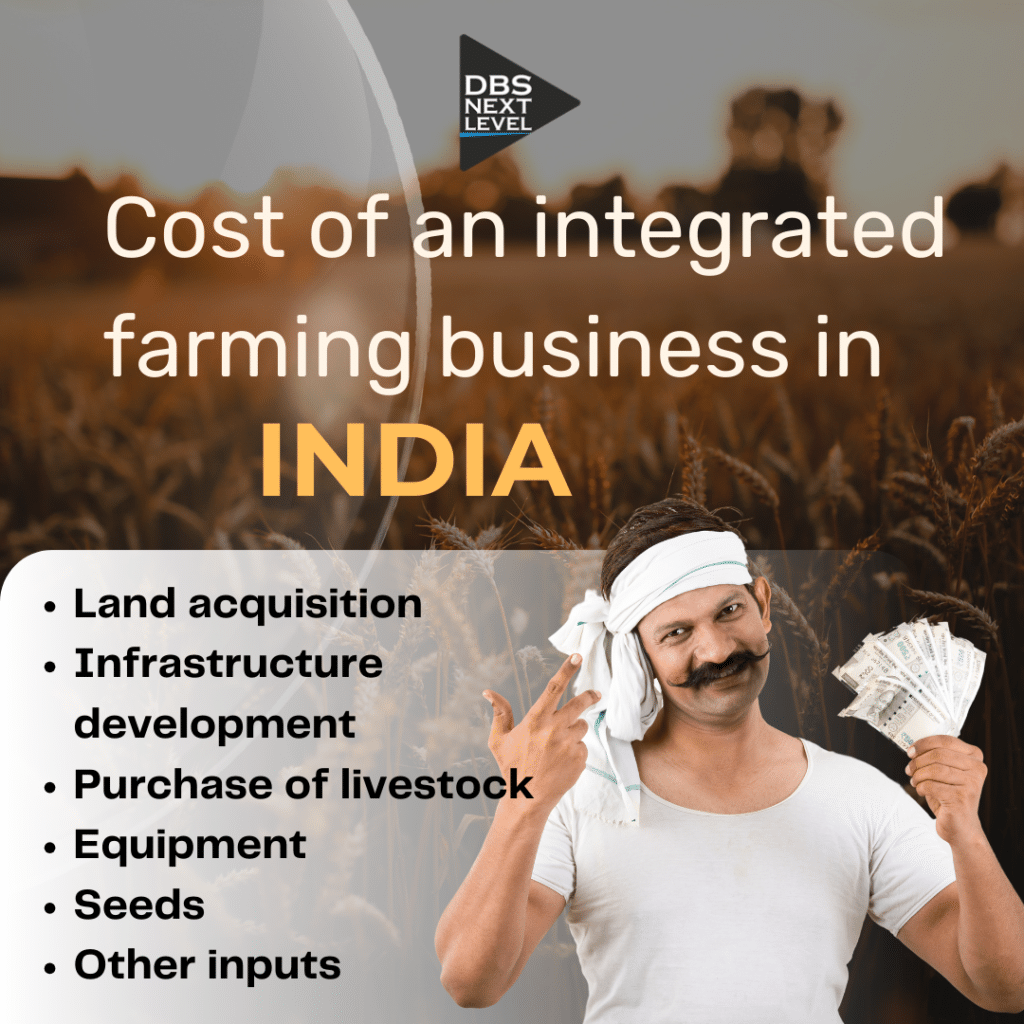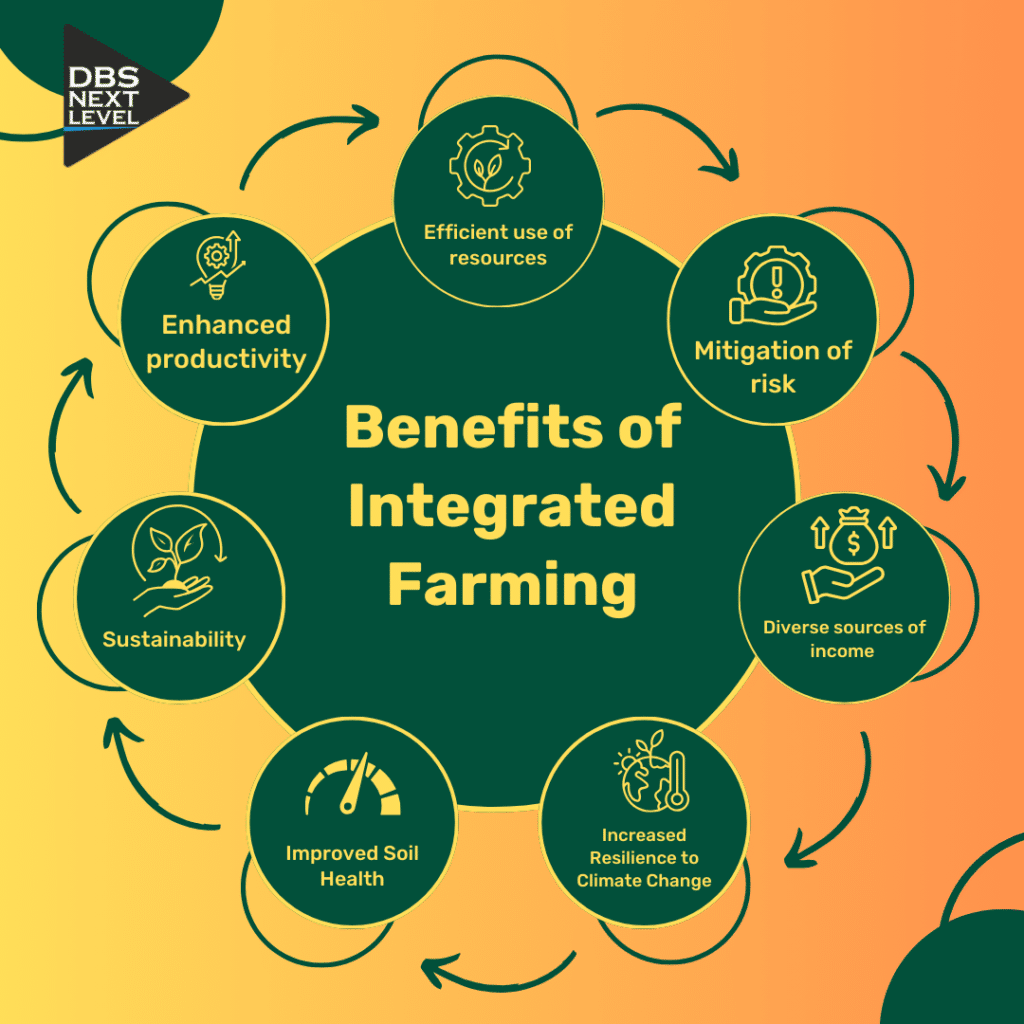Comperhensive integrated farming business
Did you know we have followed integrated farming systems since ancient times? However, along the way, due to the commercialization of crops, introducing fertilizers and greed to grow more made us forget the most sustainable farming method. In recent decades, farmers and people alike have realized the extent of damage that has occurred by not complying with an integrated farming model. A new revolution to adopt IFS in a big way has emerged.
From pre-historic times when civilization began, humans have been finding newer ways to improve their lifestyles. For years, man began cultivating and rearing animals for food, milk, clothing, protection, etc.
Integrated farming includes cultivating land and maintaining livestock, poultry, and fishing at the same place while providing consistent jobs, income, and compost throughout the year.
In this blog we have discussed integrated farming business. Let us look at what IFS is, how it can enable BIG changes in the way agriculture is perceived, and how agriculture can again be the most lucrative means of living.
What is an integration farming system?
To start integrated farming business you need a system. Integrated farming is a system that allows farmers to simultaneously put together various agricultural activities to enable better utilization of resources while promoting sustainability. The approach allows the farmers to get better revenue and enhanced production, achievable through an integrated farming system.
Various components of agriculture can be combined using multiple farming practices for crop cultivation, animal husbandry, aquaculture, and agroforestry. Integrated farming is almost a replica of the natural ecosystem wherein a combination of natural processes leads to sustaining one another. Through minimal external inputs and minimizing environmental impact, integrated farming will prevent the depletion of the land.
The main aim of the IFS is
- to improve the soil status and fertility,
- maximizing the returns/product
- environmental pollution reduction
- using by-products of one component of the farming system as the input to another.
Cost of an integrated farming business in India

Integrated farming business (project) may require a large capital initially because various aspects of framing need to be combined to build a particular ecosystem for all agricultural activities. However, over a period of time, these often yield good results and enable you to earn multiple times the initial investment.
The costs include:
- Land acquisition
- Infrastructure development
- Purchase of livestock
- Equipment
- Seeds
- Other inputs
The costs may vary according to the scale of operation, number of agricultural activities chosen, and type of IFS, along with the region’s specific requirements, which must be kept in mind while raising capital for the venture.
Some of the integrated farming business options available are:
- Crop rotation, crop mixing, and inter-cropping or using a multi-story layout to utilize the area effectively.It helps to save water, nutrition, and space with environment-friendly methods.
- Fish and livestock (cattle, pig, rabbit, poultry, etc.) integrated system, Fish-duck integrated farming, Fish-agriculture, etc.The animals’ excrement, whose house is built just above the fishpond, serves as food for marine life. This, in turn, increases the quality of water fed from the pond to the field.
- Livestock and poultry include rearing cows and buffaloes, which provide compost and milk. The pigs, goats, and sheep are reared for their wool and meat, and poultry and duck for their eggs, heart, and agriculture.
- Secondary agriculture includes bees, mushrooms, Azolla, silk cultivation, food processing, vermicomposting, biogas production, etc.
Integrated farming example: dairy-crop integration will have costs in constructing cow sheds, purchasing the milch animals, procuring fodder, and irrigation systems for the crops.
The respective costs of integrating multiple agri-related activities will add to the eventual investment you may put in to begin integrated farming.
How to develop an integrated farming business model
Developing an integrated farming business model involves several steps that enable farmers to build a cohesive agricultural system to ensure all the components are properly established to give the maximum output and desired results.
The process involves the following steps:
- Feasibility studies include assessing land suitability, market demand evaluation, resource availability evaluation, and identifying the risks and challenges.
- Site selection depends on soil fertility, water availability, climate conditions, and proximity to the market and transportation network.
- Farm layout design is made to optimize space, utilize resources, and facilitate efficient movement of inputs and outputs, enabling perfect integration of all incorporated farm activities.
- Crop and livestock selection will depend on the farm size, climatic conditions, soil, market demand and compatibility with other farm components.
- An effective management system for all types of farm activities is needed to conserve soil, pest and disease management, and nutrient and quality management.
Why we need to switch to an integrated farming system in India
- Overall health improvement of the generation
- The overall increase in the productivity rate
- Cost minimization for input use (agriculture)
- Energy-saving and hence recycling
- Increased employment
- Fodder security for livestock
- Continuous income throughout the year and
- The most important thing is the promotion of the agro-industry.
By following IFS, the increasing demand for food and nutrition can be met better than just depending on one crop cultivation alone.
Types of Integrating Farming Systems
Various types of integrated farming systems are employed across India. It depends on the feasibility of the farmer, climatic conditions, soil, market dynamics, and other logistics for implementing integrated farming systems in India become the criteria for choosing the type of IFS.

Integrated farming examples
- Fish-pond-poultry integration– manure from poultry is utilized to fertilize fish ponds, improving the growth and productivity of fish.
- Dairy-crop integration– cattle manure improves soil fertility and crop yields.
- Agroforestry integration– trees and shrubs in between crops not only provide timber fruits and forest products but help conserve soil, regulate carbon emissions, and increase biodiversity
- horticulture-livestock integration– growing fruits and vegetables, the manure from livestock can be used for soil fertility and the waste from horticulture crops can be used as fodder for rearing animals.
These are a few common types regularly found across the country, with many farmers adopting them because these are easy combinations and can be implemented effectively as per agroecological conditions. However, other experimental farmers try varying and complex combinations in controlled conditions to achieve fascinating and sometimes successful productions.
An integrated farming example
Let’s look at a 2-acre farming plot that employs an integrated farming system with an example of rice-fish integration farming. Since India is a tropical country and rice is a staple, the rice-fish integration farming type has been part of our culture for 1000+ years.
How it is done
As you know, rice fields need standing water and a good place for fish to breed as they feed on phytoplankton, bacteria, etc. Different rice varieties can be grown in the field; the local breeds are usually chosen. A slight modification of the plot by digging peripheral trenches, construction of dykes, and pond refuge allow you to breed fish and grow rice at the same time. The following land can also be utilized for growing vegetables, fruits, and groundnuts. So, a little bit of horticulture is also included in rice-fish farming.
What is required
An irrigated rice ecosystem is the best with:
- build micro watershed-cum fish refuge in 10-20% of the plot
- To create strong and wide dykes in 20% area (enabling the growth of vegetables etc.)
- maximum utilization of the 2-acre land
- waste recycling is possible as the different agri-components synergize with the ecosystem.
- Rice-fish integration accelerates productivity and better yield.
- Generates better income
- Better employment opportunities
- Organic and nutritious
Rice farmers across India have been following this practice for a long time for sustenance, with better awareness of the varieties of fish that can be grown and utilizing the smaller plots to get better yields. The need to understand integrated farming practices can help empower farmers better.
Advantages of integration farming
Farmers are veering towards an integrated farming system. The encouragement from the government and environmentalists has made it possible for this system to become popular over the years. Employing this system has numerous benefits that have paved the way for many farmers across India. Adopting this farming practice will improve their revenue and quality of life while contributing to the country’s GDP.

Some of the listed benefits of integrated farming are:
- Enhanced productivity:Higher levels of productivity due to different farming components compared to monoculture systems.
- Efficient use of resources:Optimizing the usage of existing resources and preventing wastage.
- Mitigation of risk:Diversification of income resources from crops and livestock in an integrated farming model can often cancel out risks if one component fails due to market fluctuations, climatic variations or pest and disease outbreaks.
- Sustainability:Integrated farming practices enable better water management, conservation of soil, and protect the environment while blending with the natural ecosystem.
- Diverse sources of income :Multiple revenue streams allow the farmer to reduce the dependency on a single crop of agri-activity.
Conclusion
Integrated farming holds immense potential for transforming India’s agricultural sector by promoting sustainable, productive, and resilient farming systems. The movement to integrate multiple agricultural activities can improve livelihoods and change the course for many farmers. However, successful implementation of integrated farming requires careful planning, efficient management, and adequate support from policymakers and awareness creation. With the right knowledge, skills, and resources, farmers can harness the benefits of integrated farming to create thriving agricultural systems that contribute to food security, environmental sustainability, and rural development.
